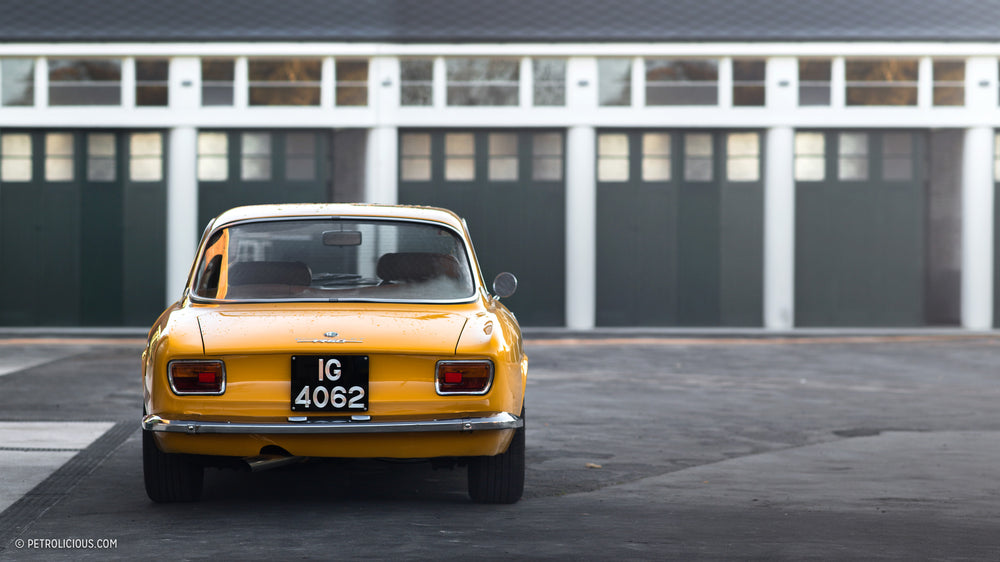Say it out loud, just once, whisper it if you must: “Alfa Romeo Giulia.” It conjures Italian imagery in the mind and heart-fluttering passion in the soul. It is an iconic name, having been affixed to the backs of sedans and sports cars alike, though the Bertone-designed coupes bearing the Giulia badge are the supreme embodiment of the brand’s sporting image in the 1960s and ‘70s. Introduced to the world in 1963, the Giulia Sprint GT would take on many subtle and no-so-subtle evolutions along the way through the Series 105/115’s decade-plus production run, and while many prefer the early step-nose cars, I have always been a proponent of the later GTV models too. A few months back, I visited the Bicester Heritage compound in the UK for unrelated business when I came across a sublime orange example of a GTV 1750 parked on the side of the street with nobody around. It was the perfect excuse to have an impromptu photoshoot.




It was in near-perfect condition as far as I could tell, and its searing Giallo Ocra paint job was a refreshing change from your usual reds and whites these cars so often wear. I’d driven to Bicester in a ho-hum modern car, so my recent drive provided some context to the car before me, made its purity of design and function much more apparent when contrasted with my car full of airbags and devoid of driving feel. The Bertone design is a timelessly beautiful shape, surprisingly complex while appearing clean and simple at a glance; its curves and proportions can be studied for hours, but it doesn’t require more than a second’s scrutiny to appreciate just how damn pretty it is. It leaves a great first impression, and it only has more to offer in further study.
As a designer, I am smitten with the Alfa Series 105/115 bodies, and though I see quite a few at car shows and the like, it is a rare chance to find one in such prime condition in such a scenic parking place. The kind of moment that you don’t realize the infrequency of until you find yourself living it. I reveled in the private time though, circling and flitting to and from the car trying to do justice to its form with my lens. Indeed, it is hard to take an unflattering portrait of such a car, for it is one of Bertone’s most significant achievements in design, and if not, surely one of the most recognizable.





It is comprised of simple curves and rolling surfaces throughout, and they blend and meet and diverge with the kind of natural fluidity that leaves you thinking back on the car as a whole rather than specific features of it. For instance, the belt line is one long unbroken arc, and it very nearly circles the entire car in one smooth stroke, save for a slight kink where it meets the transom. Then there are the purposeful haunches of the rear fenders, aggressive and sporty with their boxy cut and low-slung profile as they drop the body lines down low toward the rear. The front end follows the design language spoken by the rest of the car—simple shapes and lines arranged to complement each other rather than compete for attention—the four lights arranged neatly in the soft rectangular cutout running the length of the front fascia.
Even the seats in this car are a masterclass of design—say what you will about the staying power of the wooden inserts for the headrests, but these were in immaculate condition here, and the color of Marrone Cuoio for the leather was a perfect match with these inserts, and a surprisingly suitable pairing with the Ocra exterior.





I cherish these random moments of inspiration that present themselves every so often, and I think these serendipitous encounters with the cars we love provide a certain kind of excitement that we can’t capture with planning and anticipation. What have you run into on the street lately that you just couldn’t take your eyes off?





















































